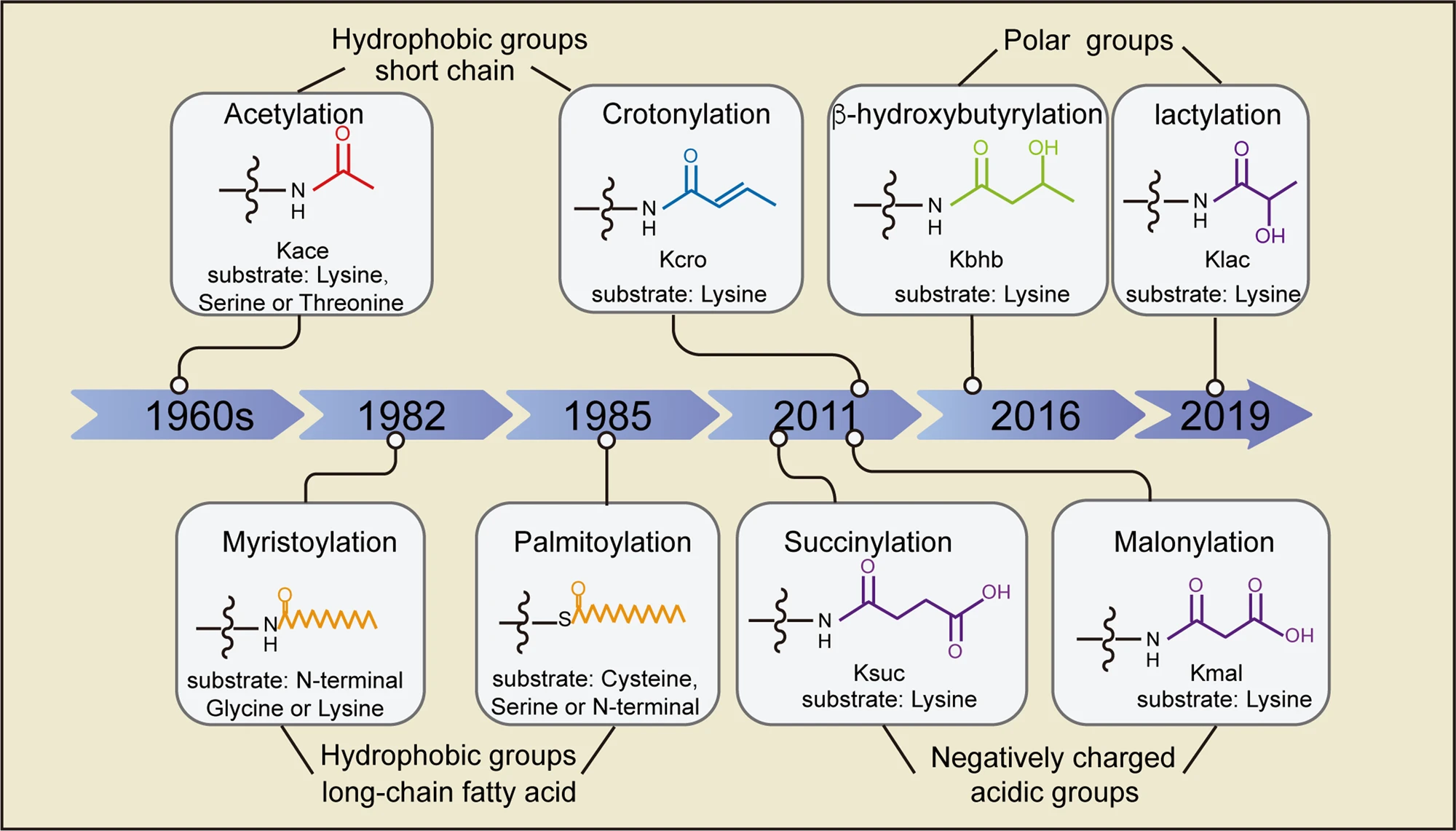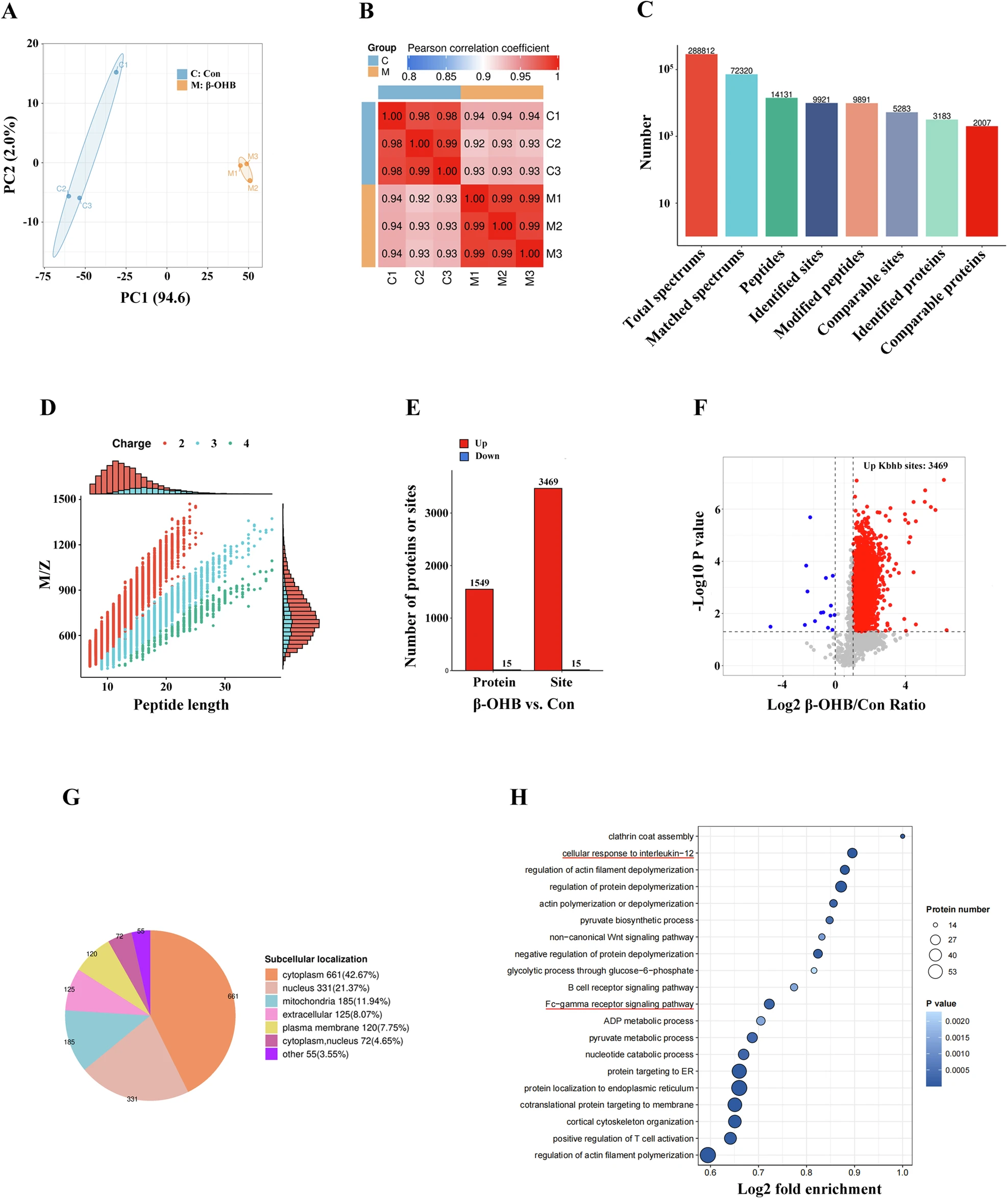Novel Acylation Proteomics Analysis Service
Novel Acylation Proteomics Analysis Service focuses on the identification and quantification of novel acylation modifications in proteomics. Acylation modifications, a widely distributed class of post-translational modifications, involve the addition of various acyl groups to proteins, thereby altering their chemical properties and biological functions. These modifications play crucial regulatory roles in protein activity, stability, interactions, and cellular signaling pathways. While traditional acylations, such as acetylation, have been extensively studied, advancements in high-resolution mass spectrometry and enrichment strategies have led to the discovery of numerous novel acylation types, including lactylation, succinylation, crotonylation, 2-hydroxyisobutyrylation, and β-hydroxybutyrylation. These novel acylation modifications affect the physicochemical properties of modified proteins and are involved in various key cellular processes, including protein stability, subcellular localization, enzymatic activity, transcriptional regulation, protein-protein interactions, and protein-DNA interactions, thus influencing a wide range of physiological and pathological events. Leveraging high-resolution mass spectrometry and targeted enrichment techniques, MtoZ Biolabs offers Novel Acylation Proteomics Analysis Service to identify and quantify these emerging acylation modifications, providing detailed acylation profiles to advance the understanding of their functional mechanisms.

Shang S. et al. Signal Transduction and Targeted Therapy. 2022.
Analysis Workflow
1. Sample Preparation
Extract proteins from the sample.
2. Digestion and Enrichment
Use trypsin or Lys-C to digest proteins into peptides.
Enrich peptides containing novel acylation modifications by employing modification-specific antibodies or chemical affinity capture techniques.
3. Liquid Chromatography-Tandem Mass Spectrometry (LC-MS/MS)
Separate peptides using high-performance liquid chromatography (HPLC), and detect modified peptides with high-resolution mass spectrometry.
4. Data Processing and Functional Analysis
Leverage bioinformatics tools to thoroughly analyze mass spectrometry data, identify modified proteins and their sites, and uncover the biological functions, metabolic pathways, and signaling networks associated with the modified proteins.
Applications
Metabolic Research
Novel Acylation Proteomics Analysis Service can analyze how novel acylation modifications regulate the activity of key metabolic enzymes, revealing their roles in fatty acid synthesis, glycolysis, and the TCA cycle.
Epigenetics
Explore the mechanism of action of novel acylation modifications in histone modification, chromatin remodeling and gene transcription.
Disease Mechanisms and Precision Medicine
Analyze the dynamic changes of novel acylation modifications in diseases, identify disease-related biomarkers and potential targets, provide a research basis for targeted modifications in drug development, and promote precision medicine research.
Protein Interactions and Signaling Pathways
Novel Acylation Proteomics Analysis Service can be used to study the functional changes and interaction networks of modified proteins and elucidate their key roles in cell signaling, stress response, and metabolic regulation.
Service Advantages
1. Advanced Analysis Platform: MtoZ Biolabs established an advanced Novel Acylation Proteomics Analysis Service platform, guaranteeing reliable, fast, and highly accurate analysis service.
2. One-Time-Charge: Our pricing is transparent, no hidden fees or additional costs.
3. High-Data-Quality: Deep data coverage with strict data quality control. AI-powered bioinformatics platform integrates all Novel Acylation Proteomics Analysis Service data, providing clients with a comprehensive data report.
4. Extensive Expertise: Years of experience in post-translational modification research provide efficient, professional solutions for your studies.
FAQ
Q. How can mass spectrometry sensitivity be optimized to detect low-abundance Novel Acylation-modified peptides?
To improve sensitivity for low-abundance novel acylation-modified peptides, begin by refining enrichment techniques. Utilizing specific antibodies or chemical probes can significantly enhance the signal of the target peptides. Additionally, optimizing liquid chromatography conditions—such as gradient selection, flow rate, and column temperature—can aid in separating complex samples and isolating the modified peptides more effectively. For mass spectrometry, employing high-resolution instruments (like Orbitrap or Q Exactive) and combining HCD or ETD fragmentation modes improves detection and identification of low-abundance peptides. Together, these strategies ensure robust and accurate detection of novel acylation modifications in complex biological samples.
Q. How can signals from Novel Acylation modifications be effectively distinguished from traditional modifications?
To differentiate novel acylation modifications from conventional acylation modifications (e.g., acetylation), adjust the mass spectrometry data analysis parameters. Incorporating unique mass shifts and specific search labels for novel acylation modifications into database searches can prevent overlap with traditional modifications. Using a customized database that includes known novel acylation sites alongside common acylation types can further refine identification. Additionally, leveraging the distinct fragmentation characteristics of different acylation types by employing both HCD and ETD fragmentation modes helps capture unique peptide fragments. These approaches ensure reliable separation of novel acylation signals from those of other well-characterized modifications, leading to more accurate modification site identification.
Deliverables
1. Comprehensive Experimental Details
2. Materials, Instruments, and Methods
3. Total Ion Chromatogram & Quality Control Assessment (project-dependent)
4. Data Analysis, Preprocessing, and Estimation (project-dependent)
5. Bioinformatics Analysis
6. Raw Data Files
Case Study
In order to determine the effect of lysine β-hydroxybutyrylation (Kbhb) modification on the regulation of macrophage M1 polarization, this study performed proteomic analysis of the global protein Kbhb in mouse bone marrow-derived macrophages (BMDM) treated with β-hydroxybutyrate (β-OHB). Compared with control BMDM, the study identified 3,469 upregulated differential Kbhb sites in 1549 proteins and 15 downregulated differential Kbhb sites in 15 proteins in β-OHB-incubated BMDM. Cell localization analysis showed that Kbhb-modified proteins were mainly located in the cytoplasm, nucleus, and mitochondria. GO enrichment analysis showed that Kbhb-modified proteins were enriched in IL-12 response and Fc-γ receptor signaling, which are essential for M1 macrophage programming.

Bai YP. et al. Cell Death Dis. 2024.
MtoZ Biolabs, an integrated chromatography and mass spectrometry (MS) services provider.
Related Services
4D-Acetylation Proteomics Service
How to order?







